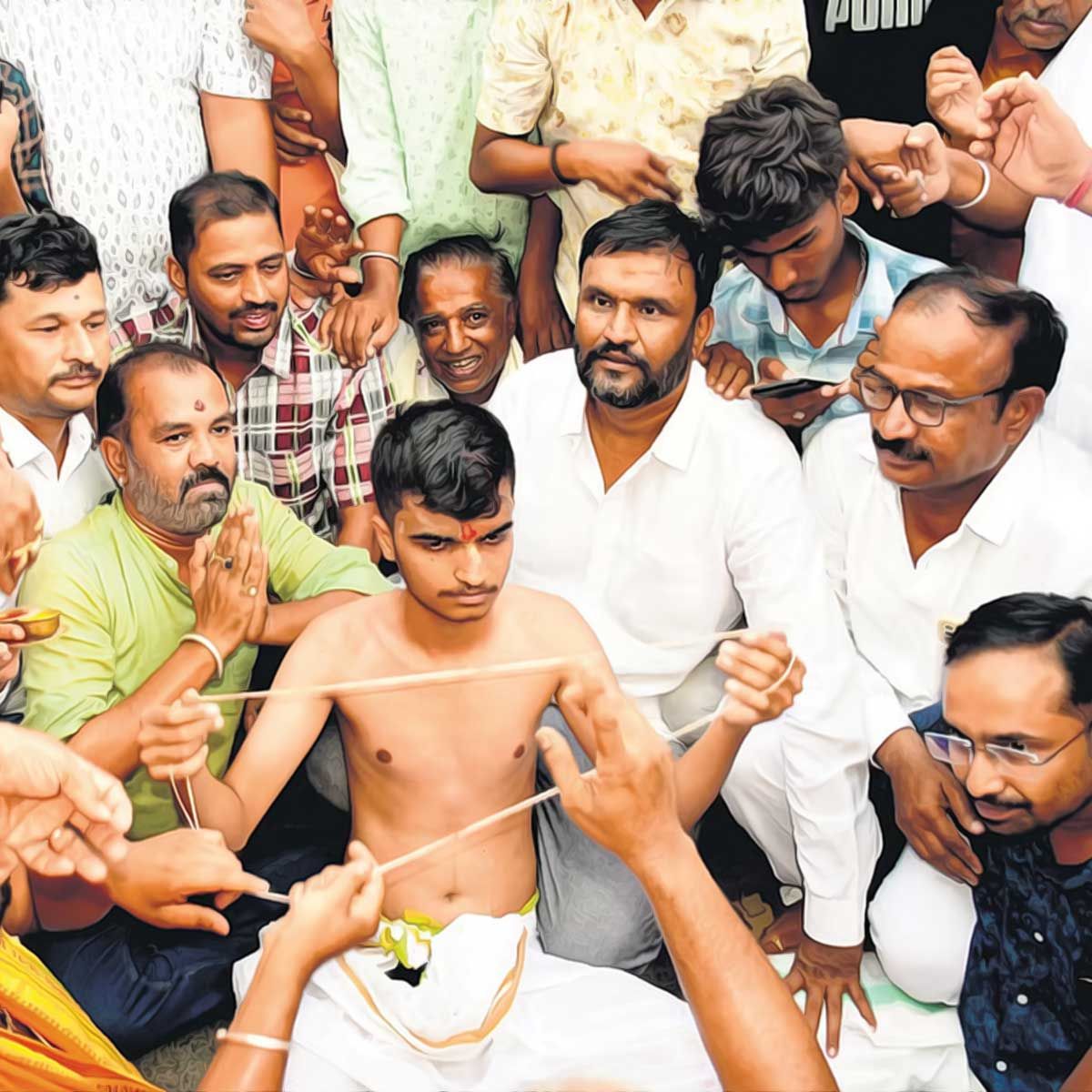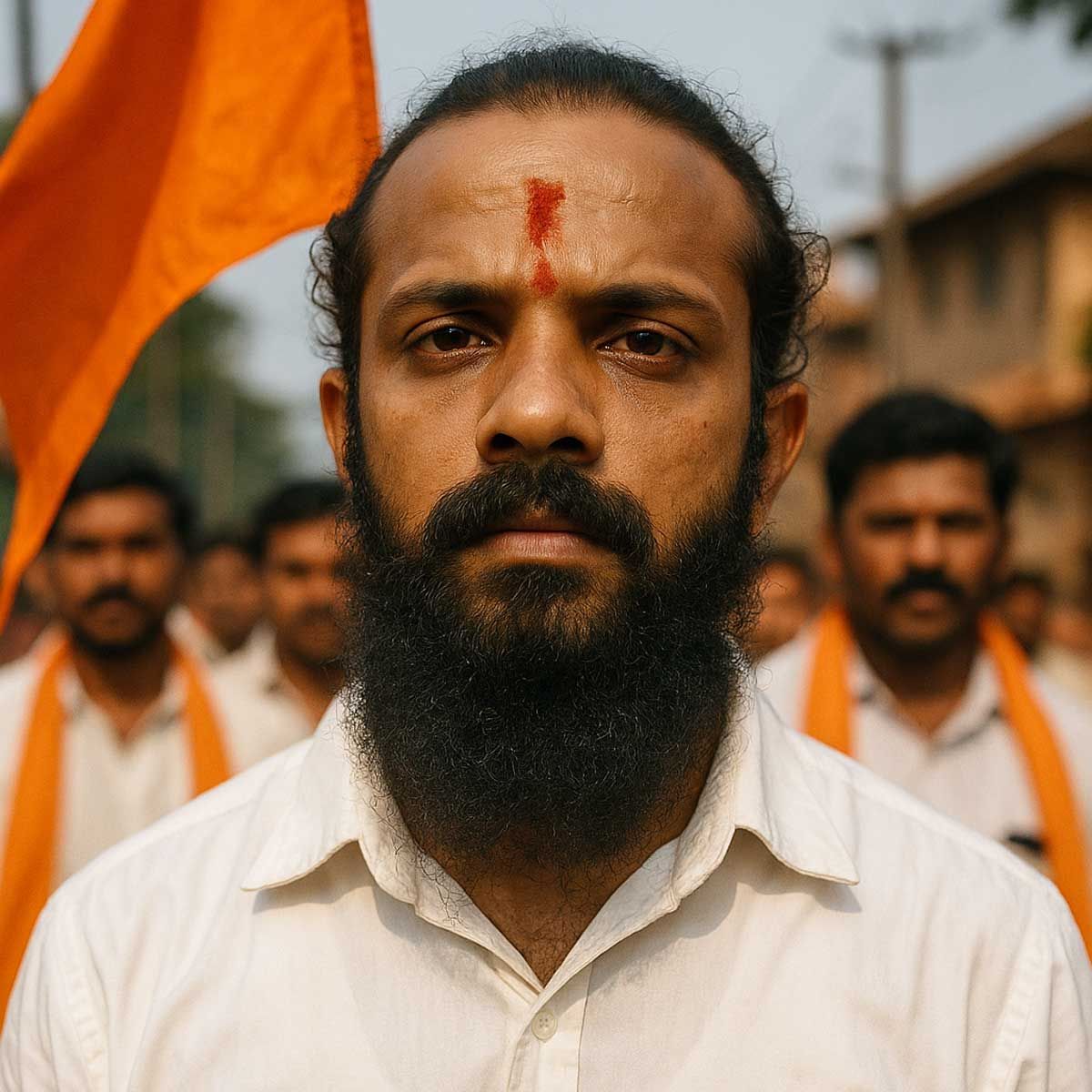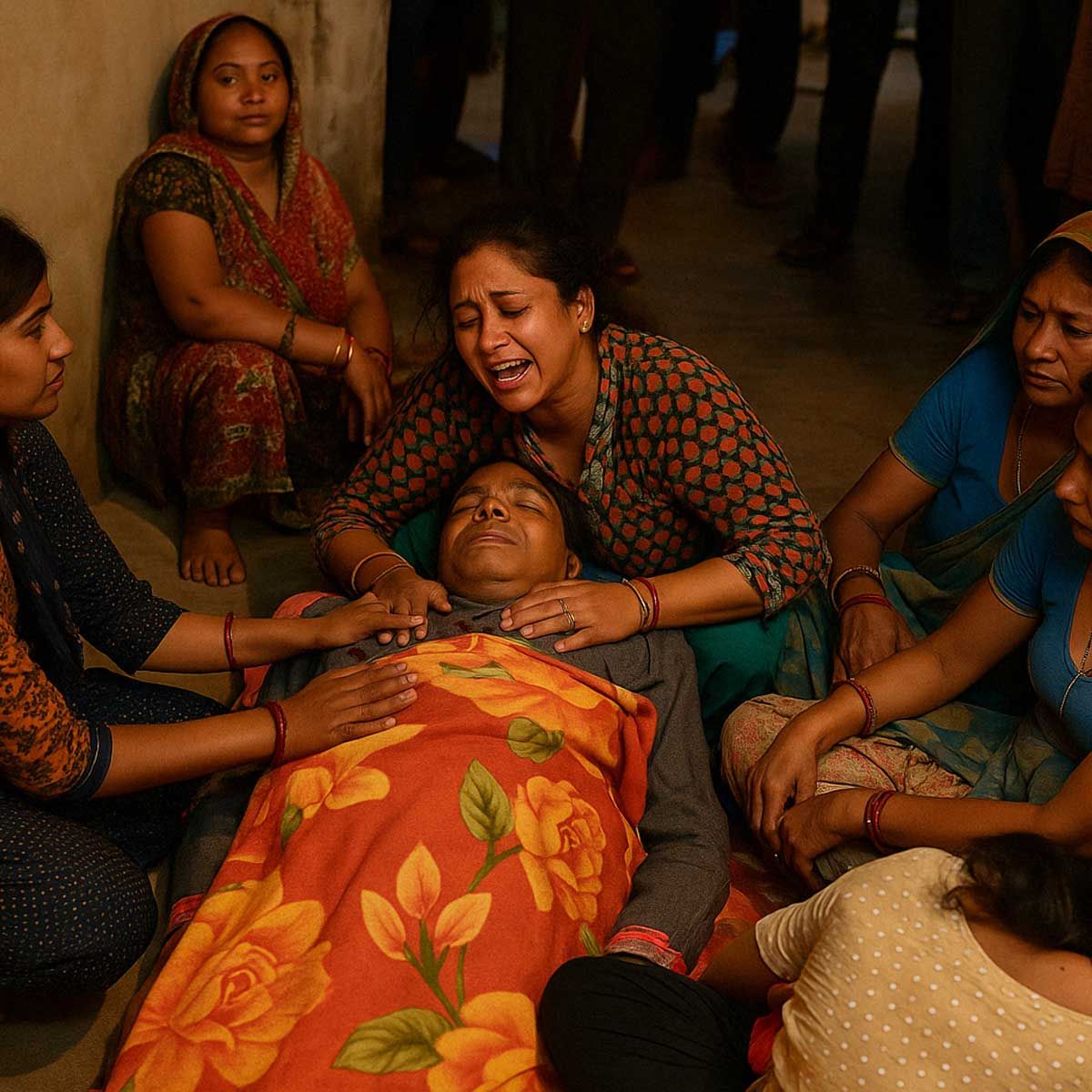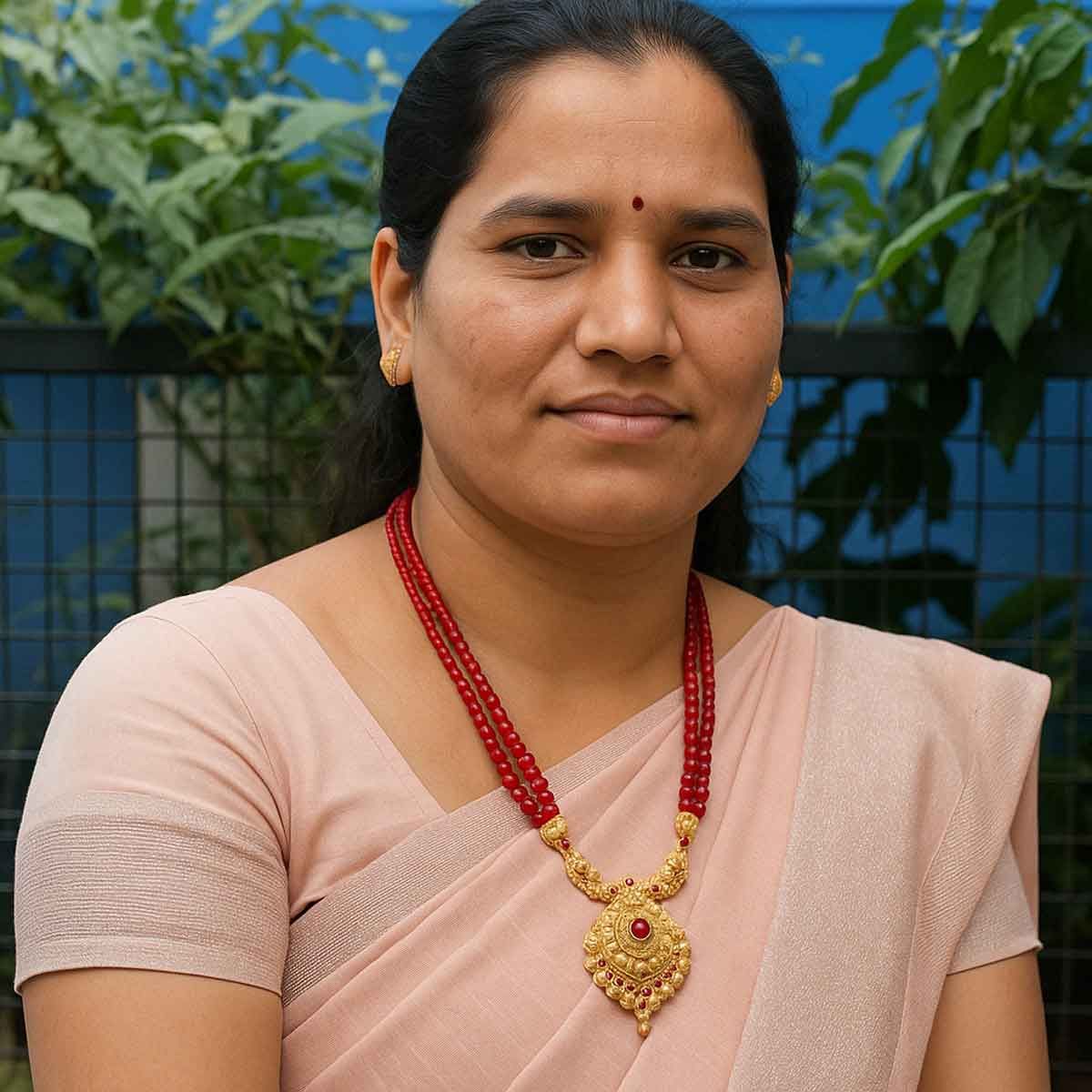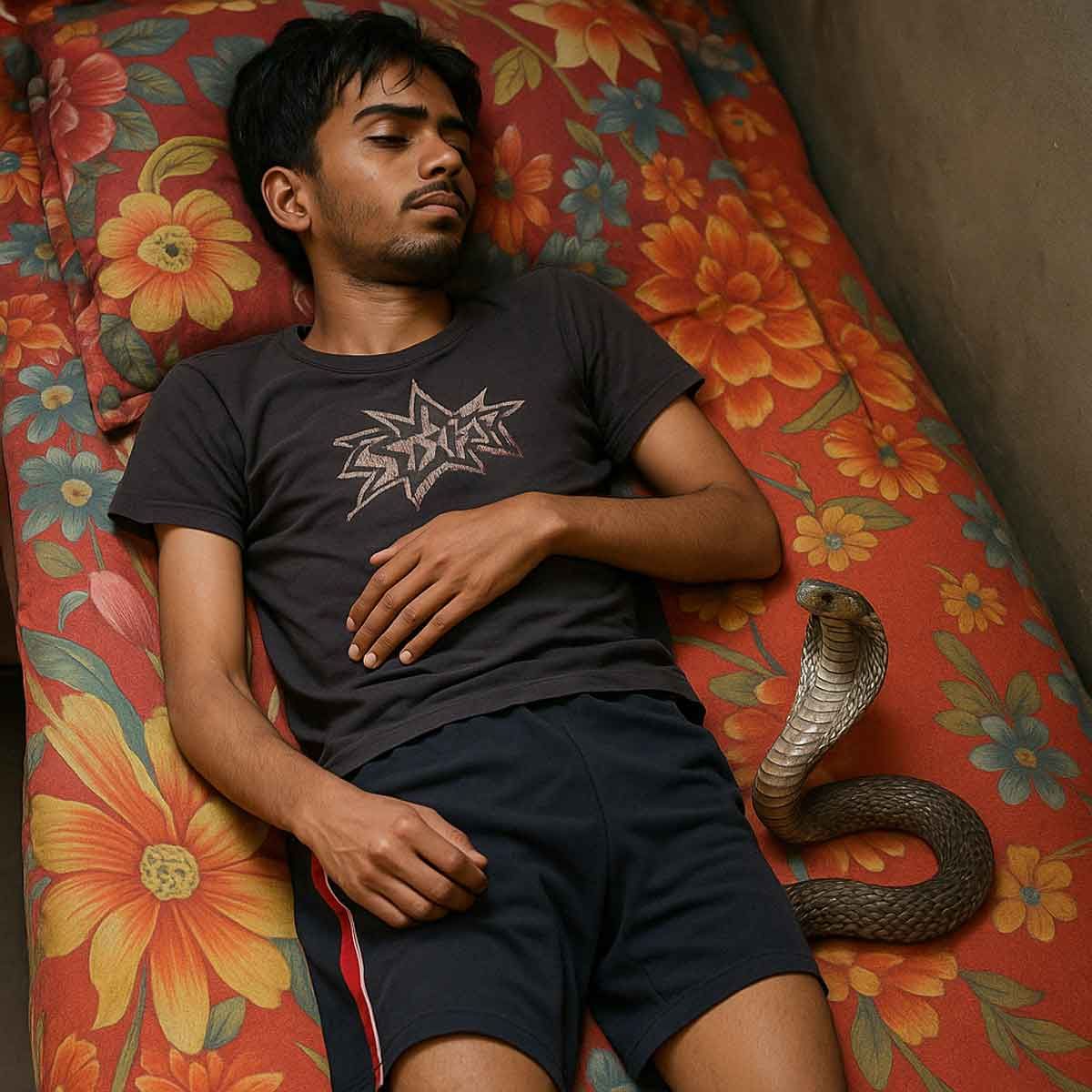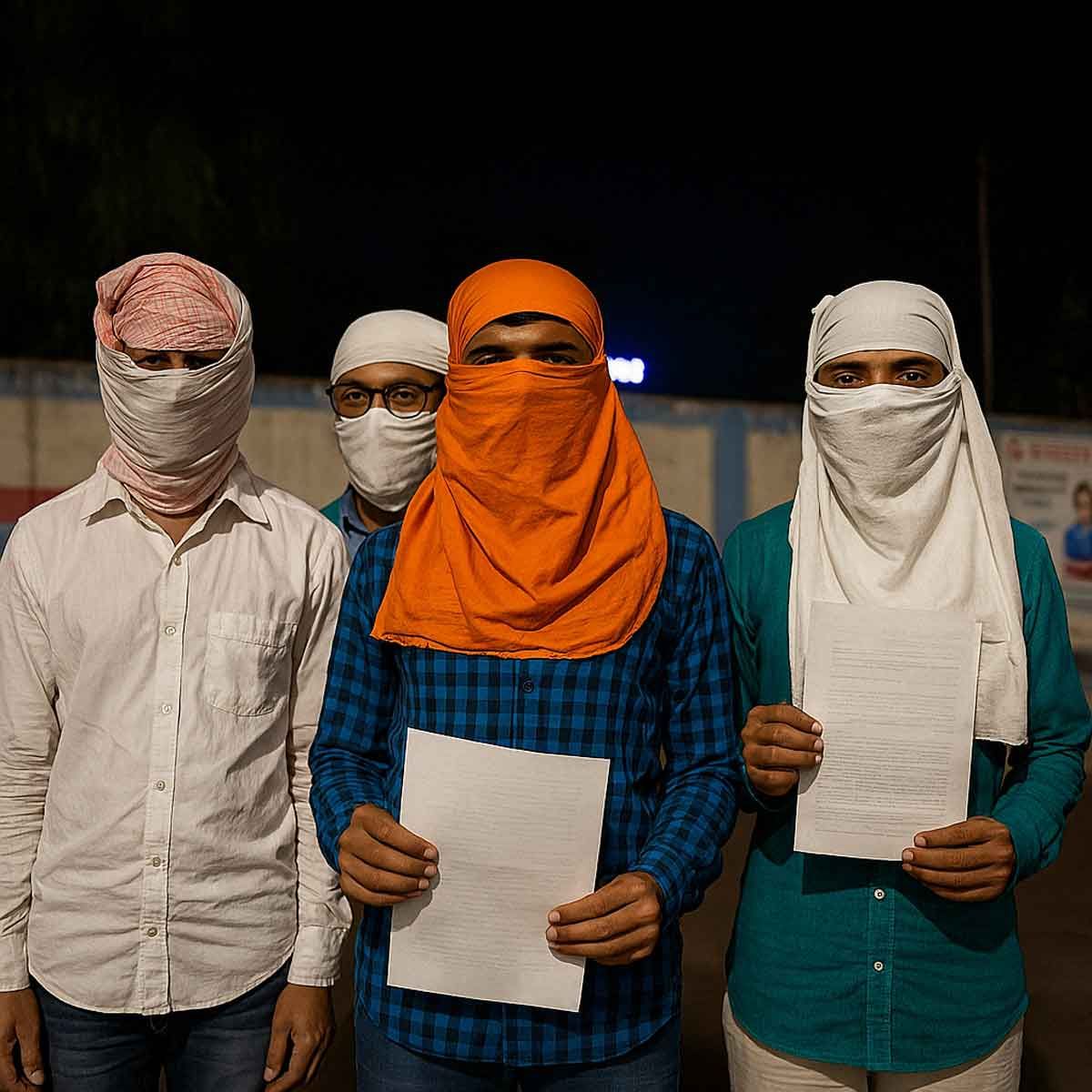More Coverage
Twitter Coverage
Satyaagrah
Written on
Satyaagrah
Written on
Satyaagrah
Written on
Satyaagrah
Written on
Satyaagrah
Written on
JOIN SATYAAGRAH SOCIAL MEDIA
"From dreams of upliftment to tales of deceit": India's colossal minority scholarship scam revealed: 53% of its beneficiaries unmasked as frauds, as aspirations turn to dust, the depth of the conspiracy stuns a nation, Smriti Irani initiates a CBI inquiry
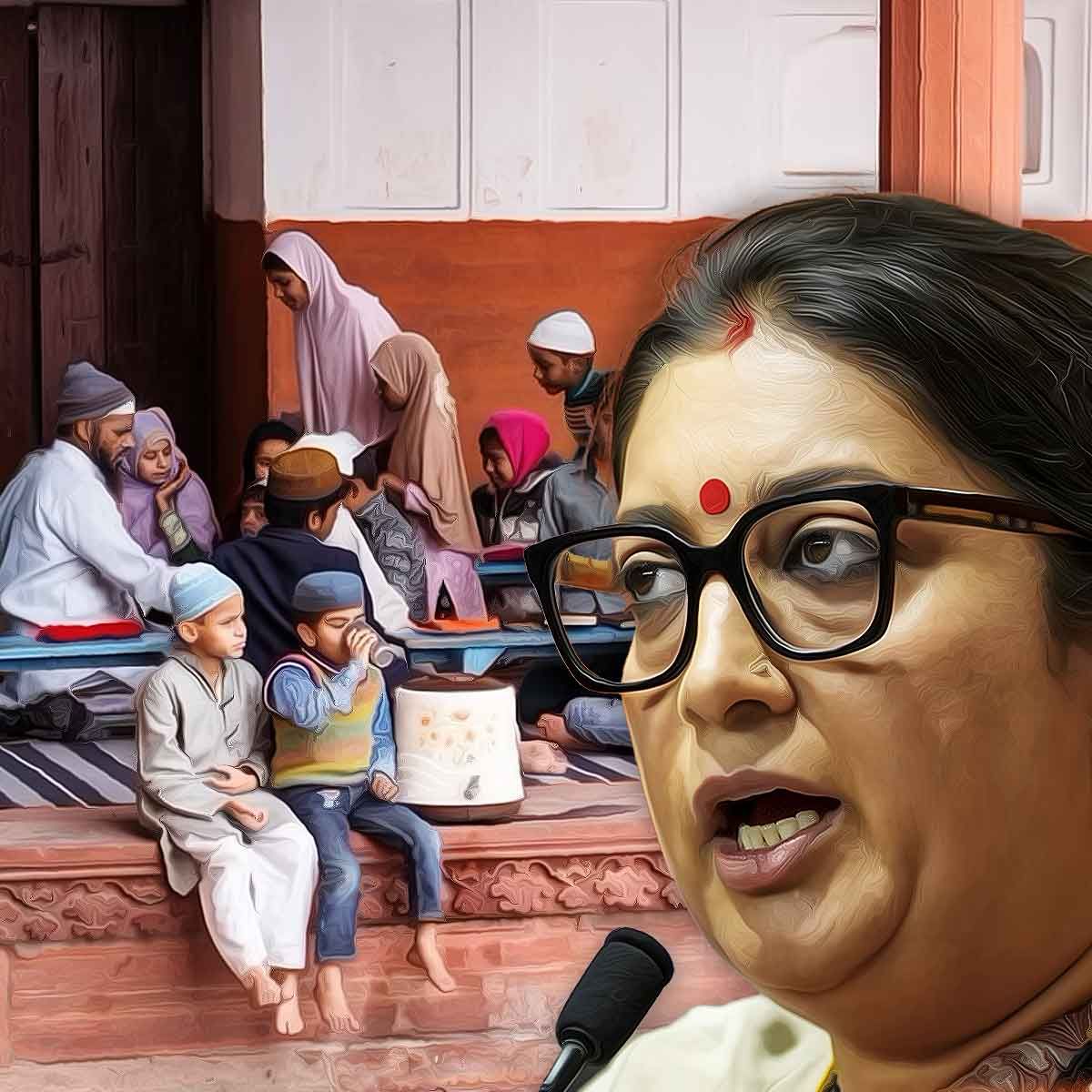
The nation was rocked by the shocking disclosure of the largest minority scholarship scam to date. Imagine a programme meant to uplift the minority, ironically, betraying the very trust it was built upon. A staggering 53% of the institutions involved have been found to be nothing but ghost entities - a revelation that unravels a Rs 144.83-crore scam that has been in the shadows for the past 5 years. You'd expect fiction to bring such twists, but this is the grim reality.
|
Union Minister Smriti Irani, known for her forthright nature, didn't waste any time. She immediately ordered an investigation by none other than the Central Bureau of Investigation (CBI). The sheer scale of the scandal necessitated the involvement of the top investigative body in the country.
The Ministry of Minority Affairs, which initially smelled something fishy, spearheaded an internal inquiry. The findings? Mind-boggling! Out of the numerous institutions they delved into, a whopping 830 were nothing but a facade. One wonders how such large-scale corruption went unnoticed for so long. But the numbers keep rolling: a total of 1572 institutions were examined, with these fraudulent 830 institutions sticking out like a sore thumb.
India Today, a prominent national daily, highlighted that the Ministry formally voiced its concerns about this on July 10th. Their dedicated team scrutinized institutions spread across a whopping 100 districts spanning 34 states. The picture painted by the numbers was bleak: of all the institutions examined, more than half were involved in activities that can, at best, be termed 'shady'. Interestingly, this figure only accounts for 21 out of the 34 states and Union Territories. The figures from the remaining areas? Still a mystery, with investigations underway.
It's not just about the money, but the dreams and aspirations of countless students that have been jeopardized. The corrupt "gatekeepers" of these so-called institutions pocketed funds meant for the minority students' education. In a decisive move, all accounts connected to these dubious 830 institutions have been put on ice. It's a small solace, ensuring that no further exploitation takes place.
The magnitude of this scam becomes even more evident when one considers the expansive reach of the Ministry's scholarship programme. Launched with great fanfare and promise in the academic year 2007-2008, the programme encompasses a mammoth 1,80,000 institutions. It spans from the grassroots, benefiting students as young as in class 1, all the way to those pursuing higher education. The realization that these "beneficiaries" were, in many cases, mere paper tigers, makes the heart heavy.
|
The Complex Web of Deception
The intricacy of this scam is reminiscent of a thriller novel. The Central Bureau of Investigation (CBI), India's top-dog in unravelling criminal mysteries, is gearing up to probe deeper into the rabbit hole. The central characters in this convoluted plot? Nodal officers of these phantom institutions, district nodal officers who allegedly turned a blind eye to the fictitious cases, and of course, the perennial question - how on earth did multiple states let this deception fester over the years? The audacity is mind-numbing!
It's as if someone painted an elaborate facade that no one, until now, thought to look behind. Sources whispered to India Today that the shenanigans didn't stop at mere registrations. The narrative got darker with banks being pulled into the quagmire. How could established banks allow the creation of accounts with counterfeit Aadhar cards and doctored KYC documents?
There's an eerie consistency to this plot. Despite being mere ghosts, many of these institutions not only existed but thrived. They got themselves registered on platforms as prestigious as the National Scholarship Portal and the Unified District Information System for Education (UDISE). How? That's the million-dollar (or should we say Rs 144.83 crore) question.
The Minority Affairs Ministry deserves a tip of the hat. Their diligent internal investigation tore off the mask from one of India's most audacious scholarship scams. A staggering 53% of scholarship beneficiaries were as real as unicorns. Imagine! Every year, while genuine minority students were possibly left high and dry, these make-believe entities laughed their way to the bank.
While this ordeal sounds like something out of a heist film, the actual numbers ground us in reality. With 1572 institutions under the scanner, 830 emerged with dirt on their hands. These culprits, masquerading under the banner of education, hoodwinked the system to siphon off funds earmarked for students' futures.
And now, the spotlight is on those supposed 'guardians' of propriety. The CBI's crosshairs are set on nodal officers who might've given approvals without batting an eyelid, district officers who seem to have 'missed' these glaring discrepancies, and the systemic apathy across various states that nurtured this deception.
Rumblings also suggest that there was a blatant disregard for on-ground verification. Rubber-stamp approvals, perhaps? And the cherry on top of this murky cake? Established banks, those trusted custodians of our money, allegedly playing accomplices with fabricated documentation. It's almost cinematic in its audacity.
|
A tangled web of deceit, bureaucratic lapses, and a system exploited at every corner. This saga isn't over, and as the CBI dives deep, one can only hope that justice isn't just served but paraded for all to witness. The reel has just started rolling.
In a plot twist that would make any suspense thriller pale in comparison, it was revealed that a staggering number of these institutions were either vapours in the wind or dormant entities. Yet, in a staggering display of audacity, they succeeded in registering on two major platforms: the National Scholarship Portal and the Unified District Information System for Education (UDISE). This begs the question, in bold and italics, “How on earth was this allowed to transpire?”. The CBI is on a determined quest to rip the veil off this mystery, intent on holding those accountable for this grand-scale deception.
The revelations, when dissected state-wise, make for an even more chilling narrative. Take a breath and digest this - in certain states, more than half of the enlisted institutions were phantoms! Chhattisgarh topped the chart with a whopping 100% fake rate. The likes of Rajasthan, Assam, Karnataka, UP, and West Bengal followed suit with their own distressing percentages. It’s the sort of statistic that makes one's blood run cold. And, it gets worse.
India Today pulled the curtain back on further anomalies. Picture this: a solitary bank branch in Malappuram, Kerala, disbursing a staggering 66,000 scholarships. That’s a number greater than the total eligible minority students. The audacity is jaw-dropping!
Move the lens over to Anantnag in Jammu and Kashmir, and the irregularities continue to stagger. A college there apparently has the ability to defy mathematics, receiving 7,000 scholarships for a student base of 5,000. One could imagine an eyebrow-raising scenario where one parent’s phone number was linked to 22 children. And get this, all these children were mysteriously in class IX. Meanwhile, another institution smirked in the face of logic, bagging hostel scholarships for every student, even though they didn’t have a hostel to begin with.
Assam throws another curveball. A bank branch allegedly boasting of 66,000 beneficiaries. The drama peaked when a verification team was allegedly threatened by a Madrasa during their fact-checking mission. Punjab’s tale isn't any less eyebrow-raising, with scholarships mysteriously finding their way to minority students not even enrolled in schools.
Diving deeper into this murky affair, let's dissect the data, state by state, shedding light on the audacious nature of these fraudulent activities, if one can stomach it:
Chhattisgarh: The state appears to take the 'top' spot in this notorious list. With all 62 institutions under the scanner, not a single one was genuine. Think about it. Every. Single. Institution. Was. Fake. It's not just a statistic; it's an outcry. How could this possibly have gone unnoticed for so long?
Rajasthan: Out of 128 institutions that were put under the microscope, a staggering 99 were exposed as fraudulent. That’s a shameful 77.34%! It raises immediate questions about oversight and begs us to ask - were there silent enablers behind the curtains?
Assam: If you're looking for a percentage that will make your head spin, Assam offers a shocking 68% of its institutions as fakes. What's even more disconcerting is the audacity with which these institutions operated, with one even allegedly threatening verification officials. The brazenness is palpable.
Karnataka: At 64%, more than half of the institutions in the state were bogus. It leaves one wondering about the remaining 36%. Were they genuine? Or were they just better at hiding their tracks?
Uttar Pradesh (UP): With 44% of its institutions exposed as fakes, UP's scenario adds to the growing list of states falling prey to this scam. The sheer magnitude and numbers involved in this state further paint a picture of a well-entrenched system of deception.
West Bengal: While the percentage might seem a tad lower than the rest, 39% is no small figure by any means. It's almost 4 in 10 institutions! This number isn’t just a percentage; it's a representation of lost opportunities and betrayed trust.
It’s vital to remember that behind every percentage and statistic is a story of betrayal, of futures hampered, and of potential robbed. These aren't just numbers; they are stains on the fabric of trust that society places in its educational institutions. As we await the culmination of the investigations, one can only hope that those responsible face the harshest of consequences, restoring faith in the system once more.
|
A Deep Dive into The Overwhelming Evidence
The breadth and depth of this scam are breathtaking, with signs of systemic rot and negligence. Let's pick apart the indicators that spotlighted these irregularities:
Malappuram, Kerala's Shocking Discrepancy: A single bank branch in Malappuram sanctioned an astounding 66,000 scholarships. But here's the kicker - this number exceeded the total count of eligible minority students registered in the area. It's not a mere oversight; it's a glaring loophole that had been exploited to its fullest. Such a discrepancy should have been an immediate red flag. Why weren't alarm bells ringing?
Anantnag's Illogical Math: When numbers don't add up, they often tell a story. In Anantnag, Jammu, and Kashmir, a college that had 5,000 students on its register astonishingly claimed scholarships for 7,000. Basic arithmetic goes awry here. One has to wonder how such an obvious mismatch passed without questioning.
The Curious Case of the Overachieving Parent: One mobile number linked to 22 children? And all, coincidentally, in class IX? It's farcical to imagine this didn't strike someone as odd. It's the sort of thing that would make one laugh if it weren't so tragic and sinister in its implications.
Hostel Scholarships Sans Hostels: An institution brazenly claimed hostel scholarships for all its students. There was just one tiny problem - the institution had no hostel. It's akin to claiming swimming accolades without having a pool. The audacity is mind-boggling.
Assam's Threatening Scenario: In Assam, when a bank branch, with a suspiciously high 66,000 beneficiaries, was probed, the verification team faced threats from a madrasa. Such intimidation tactics not only spotlight the length these fraudsters would go to but also underscore the grave risks that investigators often face in the line of duty.
Punjab's Ghost Students: Punjab presented a Kafkaesque scenario. Minority students, who were not even enrolled in any schools, were receiving scholarships. If this doesn't scream "fraud," what does?
|
Key Findings: The Bitter Pill of Truth
• Out of the 1,572 institutions examined, a jaw-dropping 830 were labeled as fakes or non-operational. That's more than half! A damning statistic that casts shadows over the integrity of the entire system.
• The intent behind scholarships is noble – helping deserving students. But in a sinister twist, these lifelines, intended for genuine minority students, were hijacked by fraudulent institutions.
• The scale and scope of this scam suggest it wasn't the work of a few rogue elements. The corruption was entrenched, seeping through multiple layers of the administrative hierarchy.
• Verification is the backbone of any system, ensuring transparency and fairness. But district nodal officers and institutions allegedly bypassed on-ground scrutiny. One can't help but ask – was it mere negligence or a well-calibrated move?
• The entire essence of scholarships was eroded with fake beneficiaries reaping the benefits, making a mockery of a system meant to uplift the deserving.
Finally, in a move that may bring some solace, the Minority Affairs Ministry has clamped down, ordering the freezing of accounts associated with the dubious 830 institutions. While this might prevent further siphoning, it also underscores the mountainous task ahead: to cleanse, rebuild, and restore trust.
 Support Us
Support Us
Satyagraha was born from the heart of our land, with an undying aim to unveil the true essence of Bharat. It seeks to illuminate the hidden tales of our valiant freedom fighters and the rich chronicles that haven't yet sung their complete melody in the mainstream.
While platforms like NDTV and 'The Wire' effortlessly garner funds under the banner of safeguarding democracy, we at Satyagraha walk a different path. Our strength and resonance come from you. In this journey to weave a stronger Bharat, every little contribution amplifies our voice. Let's come together, contribute as you can, and champion the true spirit of our nation.
 |  |  |
| ICICI Bank of Satyaagrah | Razorpay Bank of Satyaagrah | PayPal Bank of Satyaagrah - For International Payments |
If all above doesn't work, then try the LINK below:
Please share the article on other platforms
DISCLAIMER: The author is solely responsible for the views expressed in this article. The author carries the responsibility for citing and/or licensing of images utilized within the text. The website also frequently uses non-commercial images for representational purposes only in line with the article. We are not responsible for the authenticity of such images. If some images have a copyright issue, we request the person/entity to contact us at This email address is being protected from spambots. You need JavaScript enabled to view it. and we will take the necessary actions to resolve the issue.
Related Articles
- Same Congress which is offering freebies in the states during polls has not paid rent for Lutyens Delhi bungalows for almost a decade, Rent worth crores pending: RTI revelation
- Natwar Singh, an ex-foreign minister, and the Congress Party through a series of illegal oil transactions under Saddam Hussein’s regime’s oil-for-food program were involved in the Iraqi oil scam: Detail in the Volcker Committee Report
- A Tale to revisit: Robert Vadra disowned his family publicly and then followed mysterious deaths
- If Modi’s ‘Vaccine Diplomacy’ wrong, Sonia Gandhi’s ‘Eurozone Bailout’ wrong
- Was Indira Gandhi a Soviet Agent - 100 Years of Russian Revolution
- How Political ambitions of the Congress has silenced contributions of uncountable freedom fighters
- A sudden national crisis emerges as Rahul Gandhi loses bot followers when Twitter Removed accounts for manipulation: Modi, Doval, Amit Shah call a high-level meeting with the Cartoon Network, President also intervenes
- “Losing your head in a crisis is a good way to become the crisis: Heavy police forces deployed outside ’10 Janpath’, the residence of Congress Supremo Sonia Gandhi and also near residence of Youth Congress leader Rahul Gandhi, may be linked to ED probe
- Gujaratis are agitated and are taking PM Modi’s security breach in Congress-ruled Punjab personally: In their hearts, Modi is still ‘their man’
- Hindutvawadi chaku piche se chati pe marega: Rahul Gandhi’s calculated analysis on absolute bullshit
- Hours after poll strategist Prashant Kishor rejected Congress’ offer to join the party, Rahul Gandhi has been untraceable as he left India for a foreign visit: Priyanka Gandhi too has left for an undisclosed foreign location
- "BJP has spread kerosene all over the country. You need one spark and we'll be in big trouble": A Criminal psychology study of Rahul Gandhi statement using Kerosene and link of "SAFFRON TERROR” word coined by that time ISI chief
- During ‘Kheti Bachao Yatra’ in Kurukshetra Shehjada Gandhi claimed of throwing China out from Indian Territory ‘in 15 minutes’: From Nehru’s Himalayan blunder to UPA’s silence as China took over Indian land in Ladakh
- Golden time of Nehru dynasty, when assets of country like Indian Navy were used for Vacation and to 'pay respect' to Edwina Mountbatten's death
- Retd Commander VK Jaitly admits that he was a witness to Rajiv and Sonia Gandhi using INS Viraat to vacation on Lakshwadeep















